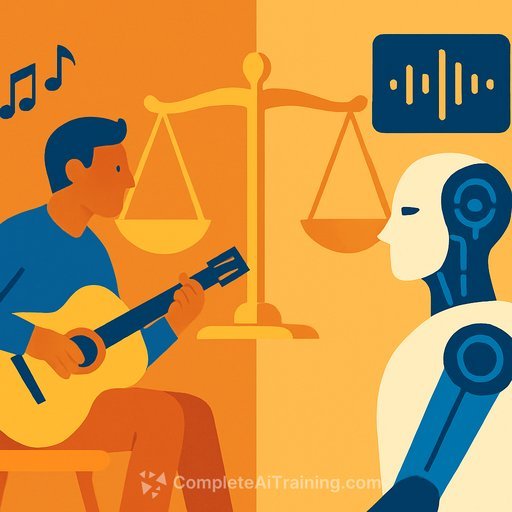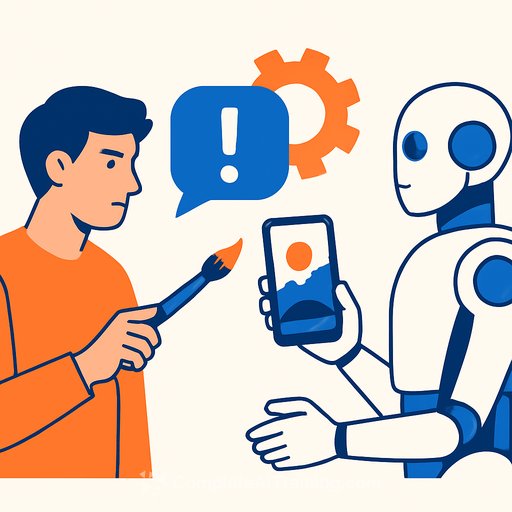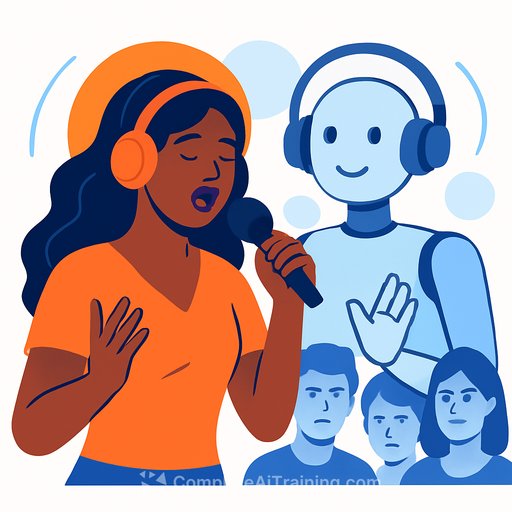Where AI Meets Music: Saint Lucian Creatives Weigh Promise, Risks, and Law
AI is now part of the studio. It writes, arranges, mixes, and markets. Some Saint Lucian creatives are energized. Others are uneasy. Most are both.
The consensus: AI can speed up production and cut costs, but it raises tough questions about ownership, credit, and culture. Supporters see useful tools. Critics worry about cloned voices, generic output, and shaky copyright.
Three lenses from the frontlines
Jim Joseph, AI consultant and managing director at Map and IT Solutions Ltd, sees a familiar pattern. New tech disrupts, people resist, then it normalizes. From live bands to synths to streaming-same arc, new tools. He expects gradual acceptance but flags a "cloud" over rights until courts settle fair use and training-data cases.
Sherwinn "Dupes" Brice, award-winning songwriter, producer, and performer, is blunt: "It's exciting, and it's scary at the same time." Tech won't slow down, so creatives either adapt or get stuck. His read: the bar just got higher for creativity and audience building. Marketing matters more than ever. On voice cloning, he's clear-laws on name, likeness, and publishing need a reset.
Werner "Semi" Francis, reggae artiste, treats AI as a craft aid-not a replacement. The best results come when artists bring their own melodies, demos, and direction, then blend AI with live elements. Worried about market saturation? He shrugs. The market has always been full. Good songs, smart business, and consistent promotion still win.
The rights and revenue knot
Joseph notes a practical gap: in Saint Lucia, copyright protection hinges on human authorship. Fully AI-generated tracks may fall outside protection, with only the human contributions covered. That matters for splits, licensing, and enforcement.
He also warns about platform terms. Some music-generation sites claim rights to create derivative works from your uploads the moment you sign in. Read the fine print before feeding stems or vocals into a model.
Brice pushes for clear guardrails. If an artist's voice or likeness can be cloned, rights-holders should be able to opt in-or opt out-and get paid. Regional experiments, like Trinidad and Tobago's AI soca artiste JOU VAY, make the questions urgent: Who owns the "voice"? How are royalties split when code assists composition?
Francis keeps the compass on craft: bring your ideas first, use AI second. Otherwise the output turns generic.
For broader context on policy and case law, see the U.S. Copyright Office's guidance on AI and copyright here and WIPO's resources on AI and IP here.
Practical guardrails for creatives
- Define your workflow: Decide where AI assists (ideation, reference tracks, comping, mix prep) and where the human hand leads (melody, lyrics, performance, final takes).
- Protect your inputs: Avoid uploading raw vocals, artist likenesses, or unreleased stems to public tools. Use offline models for sensitive material.
- Read the terms: Check license, training, and derivative-use clauses. If unclear, don't upload. Keep screenshots of policies at the time of use.
- Credit and splits: Document who did what. Note model names and versions. Make split sheets reflect human authorship and any licensed datasets or packs.
- Consent for voices: Get written permission before cloning or style-matching an identifiable voice. If you're the voice, decide your policy now.
- Metadata discipline: Store prompts, session notes, and change logs. It helps with credits, claims, and your own repeatable process.
- Brand and marketing: AI can draft copy and cut micro-content, but you still need a story, a face, and consistent touchpoints-email list, short-form, live shows.
- Legal hygiene: Add warranties in contracts about data sources, voice rights, and tool usage. Include replacement clauses if infringement is flagged.
- Quality filter: Use AI for speed, not taste. Keep a ruthless ear. If it sounds generic, rework it-or re-record it.
Courts, contracts, and what to do next
Pending court decisions on training data and fair use will set the boundaries. Small markets like Saint Lucia will feel the ripple effects-especially where budget tools tempt risky shortcuts. Joseph's advice: err on the side of caution.
Brice's north star is human. Add the machine, but keep your fingerprint. People still show up for live performance and connection. That's your moat.
Francis backs the fundamentals: learn the music, learn the business. With that base, AI remains a tool in your kit-not your identity.
Move now: build your AI-aware workflow
- Audit your tool stack. Remove anything with rights-grabbing terms. Replace with safer alternatives.
- Create a consent policy for voices and likenesses-yours and your collaborators'.
- Set a split-sheet template that includes tooling notes and authorship claims.
- Block weekly time for marketing sprints: one story, one performance clip, one email-repeat.
If you want structured upskilling, explore practical AI course paths for creative roles here, or browse current AI tools that can support music workflows here.
Bottom line for Saint Lucian creatives: embrace the efficiency, watch the contracts, and keep the human voice front and center.
Your membership also unlocks:






